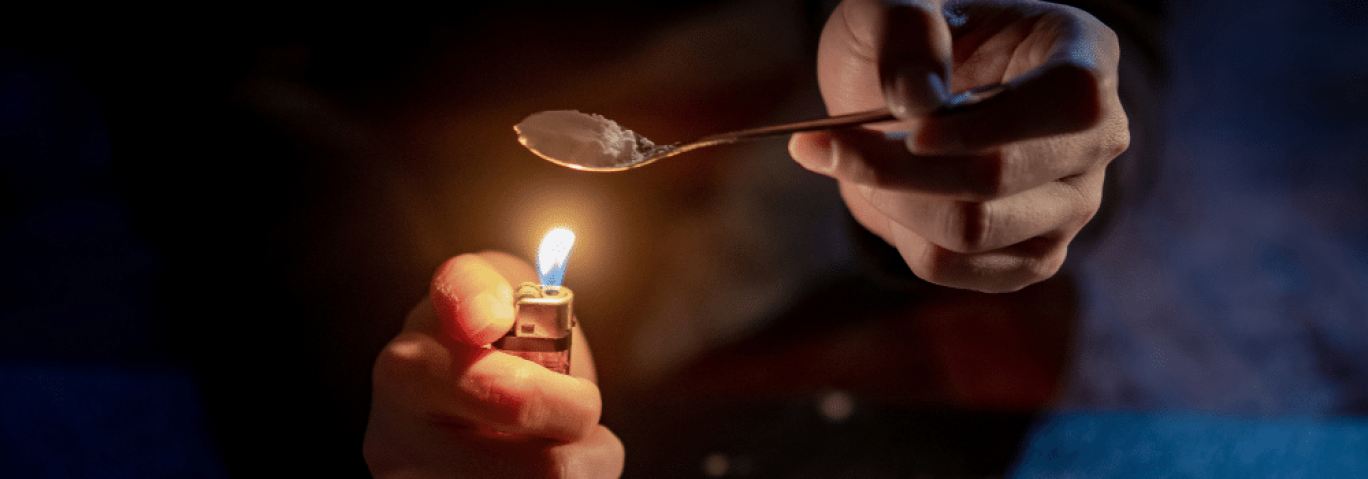Heroin is one of the deadliest and most dangerous illegal drugs out there. Derived from the resin of poppy plants, heroin was initially marketed as a tuberculosis treatment, and ironically, to overcome morphine addiction. However, almost 5% of individuals ages 12 or older have used heroin in their lifetime. If you’re worried someone you know might be using it, first, you have to find out how heroin looks like. Since heroin is sold in various forms and styles, the way it looks can often change. While heroin has a reputation, the truth is that heroin addiction impacts people from all walks of life and ages. Educating yourself about the substance is a great way to help someone you love who you believe could be struggling with heroin addiction.
What Does Heroin Look Like?
In its purest form, heroin looks like a fine white powder, very similar to baking soda. However, it can also appear in different forms and colors. Most drug dealers and users add additives like sugar to dilute the heroin. This practice makes it take another aspect like gray, brown, or black in color. These additives are one of the biggest dangers of using this drug. As drug dealers are trying to stretch out the drug diluting it with additives, they don’t mind adding potentially hazardous substances that can cause adverse effects in users.
While there are different types and looks of heroin, the Drug Enforcement Administration focuses on three primary types of heroin:
- Black tar heroin: this type of heroin is still in powder form, but it looks somewhat like ash. The powder is flaky and fine-grained. It looks like black tar; it’s sticky or gooey in many cases. Most heroin users compare it to the look of fireplace ash.
- White heroin: this type of heroin looks like a regular white powder that could be baking soda, flour, or talc. White heroin is generally the purest form you can find in the streets. However, sometimes it can be cut with additives like sugar or cocaine. Depending on its additives, it will have a different type of consistency.
- Brown heroin: this type of heroin, also known as tan heroin, is less expensive and less potent. This is heroin with many additives and has been cut with different substances to stretch it out. Most of the time, you’ll find a fine brown-looking powder.
Packaging
Beyond understanding what heroin looks like, you also have to think about the packaging and other indicators that someone uses heroin. Most of the time, heroin is sold in small packages that are very easy to hide. People package heroin in aluminum squares. But, Ziploc bags are used for higher-quality heroin. Black heroin can often be found in latex materials, like balloons, because this is a more sticky substance. Although rare, some people sell heroin in capsules that have been emptied and replaced with the drug. This is fairly common in workplaces, schools, and parties because it’s easier to pass the drug without suspicion.
Paraphernalia
Now that you have a general idea of what heroin looks like, you understand the different colors and packaging methods. It’s time to talk about paraphernalia. Finding drug paraphernalia in a loved one’s possessions or rooms is a key indicator that they’re abusing drugs. Aluminum foil and lighters are very common to find. People place heroin on the foil and heat it with a lighter to prepare it for injection. Syringes are also common with heroin users. This is particularly common among intravenous drug users. Another option is spoons. People use spoons to heat heroin more easily. Cotton balls and cigarette filters are also used to filter heroin before it’s injected.
[button link=”https://lighthouserecoveryinstitute.com/how-to-identify-an-addiction-in-a-loved-one/” type=”big” color=”lightblue” newwindow=”yes”] HOW TO IDENTIFY AN ADDICTION IN A LOVED ONE[/button]
Does Your Loved One Have a Problem with Heroin?
If you find drug paraphernalia in your loved one’s bedroom or possessions, it’s easy to get scared and nervous. You might have a hinge that your loved one struggles with heroin, but you’re not too sure to confront them yet. Signs of heroin use:
- Track marks on their arms or legs
- Pinpoint-sized pupils
- Slurred speech
- Nodding out constantly
- Sudden weight loss
- Bruised skin
- Flushed skin
- Excessive sleep
- Flu-like symptoms
How to Help
Confronting a loved one that’s using heroin is very difficult. You don’t want to come on too strong because you might scare them away, and they’ll likely reject any help you can offer. We recommend that you reach out to a specialist to talk about your options. Sometimes, scheduling an intervention can be the best way to help someone get help for their addiction. At our drug rehabilitation center, you can be a part of your loved one’s recovery process. At Lighthouse Recovery Institute, we can help guide you and your family into a brighter tomorrow. You’ll be connected to a caring and expert outreach and admission coordinator who can help start the recovery process.









